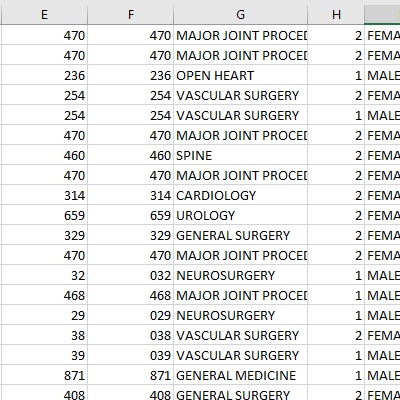FoundationDx builds and automates innovative machine learning solutions in healthcare and underserved organizations that need to efficiently and effectively drive patient satisfaction, healthcare quality and process performance goals in complex data environments.
We’re a small, self-funded company that’s led by its founders. Most importantly, we make services that we love, and it shows. Our subscribers are more than customers… they’re fans who share our passion for the opportunities that AI presents in their business and community. We’re growing at a quick but manageable pace, not because of big rounds of funding, but because we provide valuable early insights into process risk and performance improvement factors at modest cost.
Special programs are provided for 501(c)(3) organizations
Unsupervised Learning for Anomaly Detection
FoundationDx delivers quick-turnaround machine learning studies to evaluate how automated anomaly detection can enhance the efficiency and accuracy of your data-driven quality and outcome processes.
We leverage Large Language Models (LLMs) to help craft, code, and refine our advanced machine learning (ML) solutions.
Our team designs and automates innovative ML pipelines for healthcare, security, and mission-driven organizations that need scalable, reliable, and efficient tools for reviewing complex data environments.
Using our Hybrid AI approach, we combine domain-specific rules with unsupervised learning to deliver early, actionable insights into process risks, outcome performance, and improvement opportunities—all at a modest cost.
Special programs are provided for 501(c)(3) organizations
| |
Sweet Spot |
| Feature | LLMs | Machine Learning | Hybrid AI (Rules + Unsupervised Learning) |
|---|
| Input Format |
Requires text (needs conversion or prompting) |
Works directly with structured/tabular data |
Works with structured data and rule-derived features; no conversion needed |
| Performance on Small Datasets |
Often worse unless fine-tuned on specific domain data |
Generally better out of the box |
Enhanced by injecting domain rules as weak signals or priors; handles small data better than ML alone in low-signal environments |
| Explainability |
Low (black box) |
Higher (especially with linear/logistic models or decision trees) |
High: rule triggers are interpretable; anomaly scores can be contextualized by rules |
| Training on Small Data |
Needs heavy prompt engineering or fine-tuning |
Well-suited for training on thousands or millions of rows |
Rules supplement missing data or label sparsity; unsupervised models bootstrap learning from structure |
| Inference Speed |
Slower (esp. large models) |
Faster and cheaper |
Fast: rule filters can pre-select relevant data; lightweight models score remaining cases efficiently |
| Flexibility |
Can be used for many modalities (text/image/code/etc.) and unstructured data |
Tuned to structured formats only |
Highly adaptable: uses structured data but incorporates domain-specific logic and anomaly detection for broader insights |





